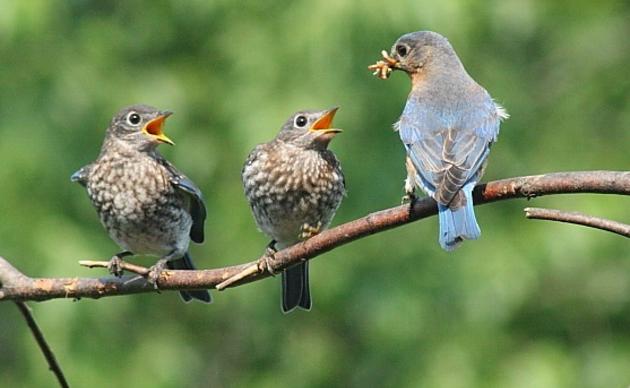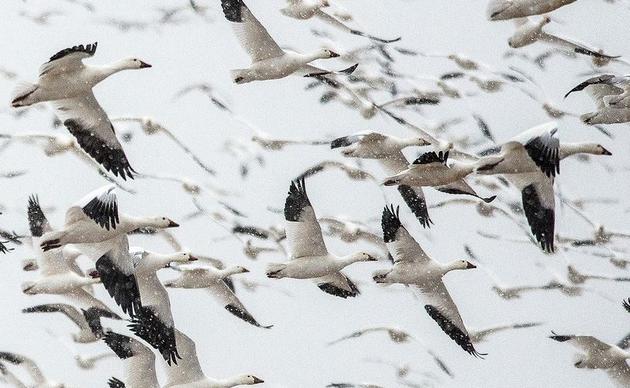Originally posted in the Ithaca Times by Clara MacCarold
January 17, 2015
In 1976, one pair of bald eagles still nested in New York State, although their eggs broke before they could hatch. Today the number of nesting pairs is over 170, with 10 in the Montezuma Wetland Complex. “It’s an amazing turnaround,” said Chris Lajewski, director of the Montezuma Audubon Center. “A true success story.”
Wintering numbers are even more dramatic. Last Friday, 31 volunteers, federal employees, and state employees counted 43 bald eagles on 14 routes around the Montezuma Wetland Complex as part of the 36th annual Midwinter Bald Eagle Survey. Survey results from 1985 to 2010 showed winter eagle populations increasing in many areas, including New York state and the northeast.
While DDT and its derivatives with their deadly egg-thinning effect may be the most well-known cause of bald eagle declines, they were not the first. People killed eagles with poisons, guns, and traps and they destroyed their habitat through logging and development. Even after 1972, when DDT was banned in the United States, eagle populations needed help to recover.
Reintroduction programs were a big component of the recovery, along with legal protection and habitat restoration. From 1976 to 1989, 198 eagles were released in New York in areas of suitable habitat such as the Montezuma National Wildlife Refuge. At least one male still living on the Refuge was part of this reintroduction. Eagles are long-lived birds.
The eagle survey is a national effort to keep tabs on the size and distribution of the winter population. Surveyors walk or drive a set route looking for eagles. David Marsh, a volunteer who coordinates winter raptor surveys at the Refuge, cautioned drivers to go slowly. “We're really looking for a good, thorough counting,” he said.
When eagles are encountered, surveyors record time, location, whether it is a full adult or a juvenile, and what direction it is moving. The time and direction of travel help determine if two eagle sightings on different routes may be the same bird. Age can be determined because bald eagles only achieve their iconic plumage at four or five years old. Before this, bald eagles are mottled brown and might be mistaken for a golden eagle by an untrained observer.
While bald eagles are now listed as threatened in the state, golden eagles are still endangered. Golden eagles are also counted, although none was seen on Friday. Before the eagle survey, Marsh said, “It’s possible, but not likely. You know, we had one on a raptor survey last year.”
The bald eagle recovery has been so successful that the Refuge no longer needs to specifically target them. According to Linda Ziemba, a wildlife biologist at the Refuge, most of their work on eagles occurs while working with other species of interest. The Midwinter Bald Eagle Survey is an exception.
Some of the eagles currently at Montezuma will stay in the area year round while others are visiting from northern New York and Canada. They’re not fleeing the cold so much as the ice that keeps them from catching fish. “They’re very opportunistic in winter,” said Ziemba. “They follow open water.”
Unfortunately, much of the water in the northern part of Friday’s survey was completely frozen over. “If we had done it a week ago, we would have gotten a lot of them,” said Ziemba. Forty-two eagles were seen during a weekly winter raptor survey the previous week, and although this was less in number than the Midwinter Bald Eagle Survey results, the raptor survey covered a smaller area and targeted grasslands rather than more favorable eagle habitat.
While the Midwinter Bald Eagle Survey is a snapshot of the Montezuma population on one day, the more picture complete combines that data with data from the winter raptor surveys and from observations over the summer breeding season. Ziemba said that one discovery was two nests that were surprisingly close together, only a few hundred yards apart. She said this was a testament to how good the habitat was at the Refuge.
Jackie Bakker, a volunteer at the Refuge, monitors bald eagle nests while performing waterbird, shorebird, and raptor surveys. Her sightings during the eagle survey were also near these nests. “We saw three by the Fisher Road nest,” she said, “and one by the Pack Wood Road nest.”
The Montezuma Wetland Complex has a very dedicated pool of volunteers and Bakker is no exception. “It’s nice to know that the data is being used in a meaningful and helpful way,” said Bakker.



